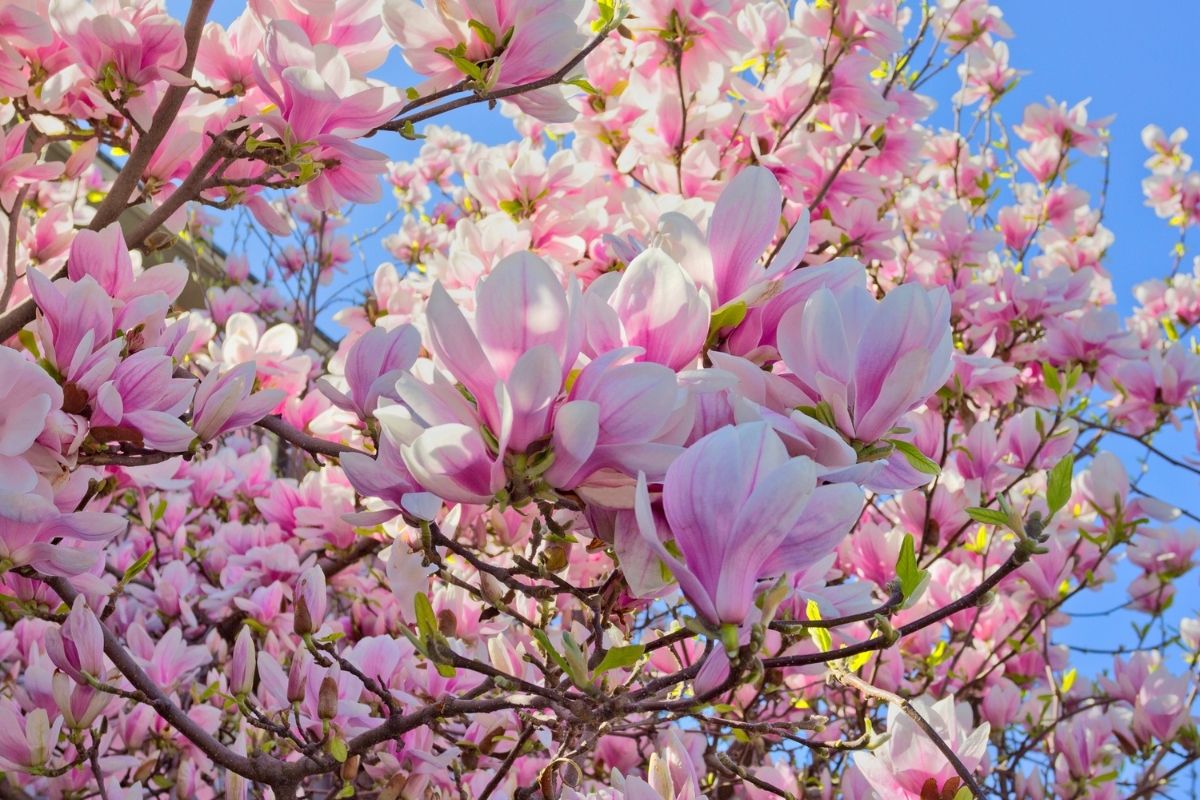
Annual or Perennial? Tree or Shrub?
Have you ever asked yourself what is the difference between an annual and a perennial? A tree and a shrub? Sometimes the most basic questions are the hardest ones to ask, because it seems we should already know the answers. How do these different types of plants shape our gardens? How can we best use them in our outdoor living spaces? If you’re asking these questions, read on, this post is for you!
Table of Contents
Annuals
In Canada, we often grow plants in a climate that is much colder than their native environments. Sometimes we refer to these plants as ‘annuals’ and this can be misleading, because these plants could be perennials when grown where they originate from. A true annual is a plant whose life cycle completes in a year, from spring to summer to fall. Generally, in early spring, seeds are planted in the warming ground and germinate into seedlings. These seedlings flourish into growing plants, and as they mature, flowers may come into bloom. Flowers often yield fruit or seeds, and signal to the plant a life cycle nearing completion. The plant gradually begins to die back, including the roots, generally when the first hard frost of autumn arrives.
Annuals are valuable and versatile because of their shortened life cycles; they grow faster and come into flower earlier. Annuals offer eye catching, vivacious colour, filling out hanging baskets, window boxes and containers or an entire flower bed. Consider planting annuals over a bed of dormant spring flowering bulbs. Think about how are you using the areas of your garden and how will they be seen.
Perennials
Plant a perennial once, and enjoy its beauty season after season. Perennials are popular with gardeners because although they die back to the ground with the arrival of fall, their root systems can endure harsh winters. Dormant in the ground, perennials return to growth with vigor come spring and summer. Their first year planted, they may put their energy into establishing their root systems rather than unfurling blooms, but once established perennials are long-lived. With each passing season, perennials become more robust and bloom more profusely, providing structure in the garden as they are grown in one location.
Perennials require less work than annuals as they aren’t germinated from seed and planted out each season, but they do require the minimal care of watering, fertilizing, pruning and occasional division. Gardens with perennials are always changing. Blooming at different times throughout the growing seasons, a variety of perennials create an ever-changing colour palette and interest in the garden. There are many types of perennials with striking foliage and flowers in a wide variety of colours, shapes, sizes and textures. Perennializing bulbs such as true lilies, liatris, and crocosmia are also hardy and can remain in the soil for years, slowly spreading and filling out garden spaces. Perennials also tolerate varied growing and climate conditions while improving soil structure and preventing erosion.
Trees, Shrubs & Vines
Trees, shrubs and vines are woody perennials. They do not die back to the ground every year with the change of seasons, even though some of these plants may lose their foliage. Once you know a plant has a woody growth you can determine whether it is a tree or shrub or vine.
Most shrubs are less than 5 m (15 ft.) tall and have several woody branches rather than a single trunk. Shrubs are often rounded in shape too. In garden design, shrubs can define or frame your outdoor living space, becoming the groundwork or substance around which the rest of the garden is shaped. Shrubs can provide privacy – for example hedges are a green, friendly alternative to fences. Flowering shrubs can also bring out the best features of a home and enhance curb appeal while hiding a basement foundation. Single specimen shrubs can also become stunning focal points and draw the eye into the garden.
Trees also make beautiful garden focal points, providing shelter and shade on the hottest of summer days. Trees are determined by their main elongated woody trunk that is at least 8 cm (3”) or more in diameter, and rising at least 138 cm (54”) or more in height. Trees have few, if any lower branches, and grow from a crown or canopy of foliage. Trees also attract birds and other small wildlife into our gardens, bringing us closer to the natural world.
Vines have an identifiable growth habit, with long and slender branches that climb by winding themselves about a support such as a trellis, arbor, or fence. Vines can also hold fast with tendrils or suction-like claspers. Vines take the garden vertical, and sometimes even overhead. Use them to create transitions in the garden, for privacy screening, or to provide coverage over a plain wall. Flowering vines such as clematis soften and add texture, and can create movement in the garden.



P
Great post!
hugh
Wow man o man i learned sooooo much! THX!